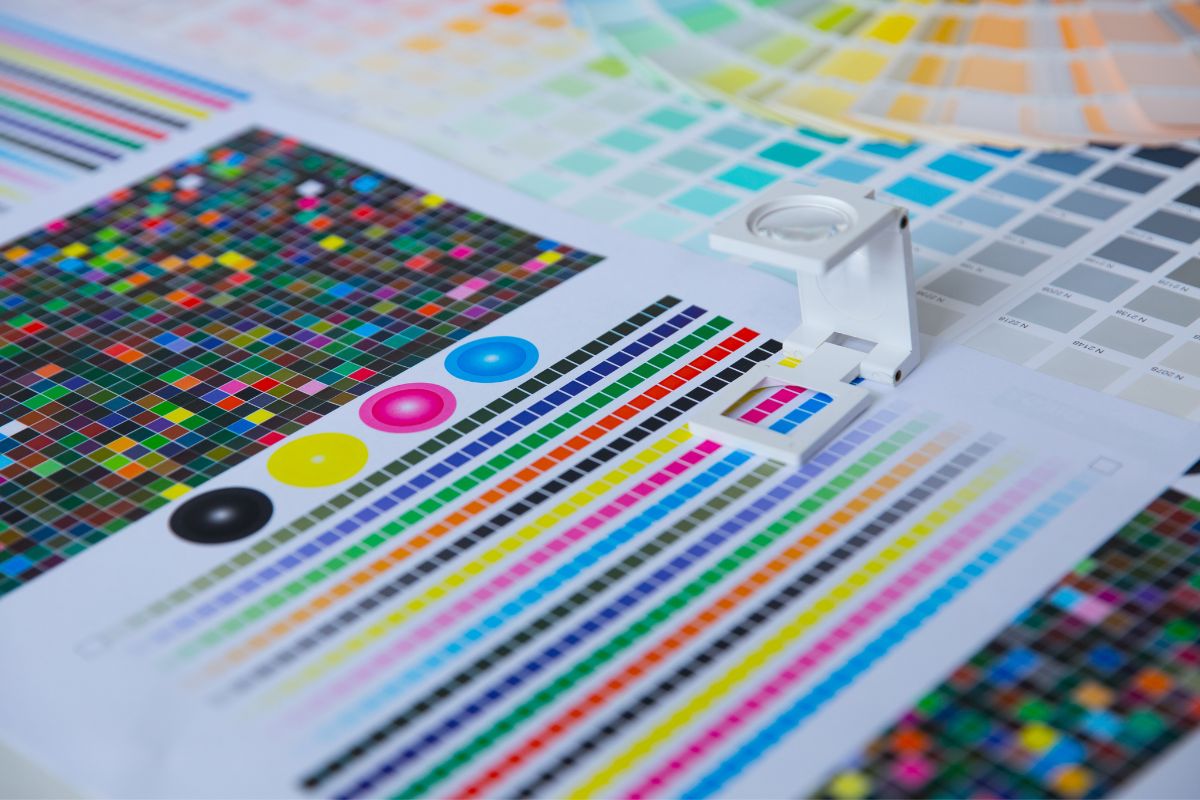When you’re working with color in digital design, it’s essential to understand the difference between HEX and CMYK color models. HEX codes are used predominantly in web design and digital display because they represent colors in a hexadecimal format, suitable for all devices and screens. This six-digit code, beginning with a hash symbol, includes a combination of numbers and letters that define a very specific shade.
On the other hand, CMYK is a subtractive color model used in color printing. CMYK stands for Cyan, Magenta, Yellow, and Key (Black) – the four ink plates used in most color printing. This model works by subtracting brightness from white, as opposed to adding light like RGB and HEX. If you’re a designer intending to transition from digital to print, you’ll find it necessary to convert HEX codes to CMYK values to ensure the colors in your print material match what you’ve designed on screen as closely as possible.
Understanding Color Models
Color models are essential for digital design and printing, offering a systematic approach to creating and representing colors across various devices. Your understanding of these models is key to effective design and reproduction of colors in both digital and print formats.
Explanation of Hex
A hexadecimal color code is a way of representing RGB color values in HTML, CSS, and SVG documents. You work with a six-digit combination of numbers and letters that define the color’s intensity in red, green, and blue, respectively. Each pair of digits ranges from 00 to FF (in hexadecimal), which translates to 0-255 in decimal notation. For example, #FF0000 corresponds to full intensity red with no green or blue.
Overview of CMYK
The CMYK color model is a subtractive color model used in color printing. It operates on the principle that colors are subtracted from white light to create other colors. CMYK stands for Cyan, Magenta, Yellow, and Key (black). Adjusting the percentage of each of these four colors allows you to produce the entire spectrum of colors in print. Unlike digital colors which are created with light, CMYK colors are created with pigments.
Differences Between RGB and CMYK
The RGB color model is an additive color model, primarily used for digital screens. In contrast to CMYK, it combines Red, Green, and Blue light to form colors; when all three are combined at their highest intensity, you get white. The main difference is in the medium: RGB is used for digital displays because screens emit light, while CMYK is best for print because it reflects light. When preparing designs, you must convert from RGB to CMYK for accurate print colors, as screen colors won’t always look the same when printed.
Hex Code Fundamentals
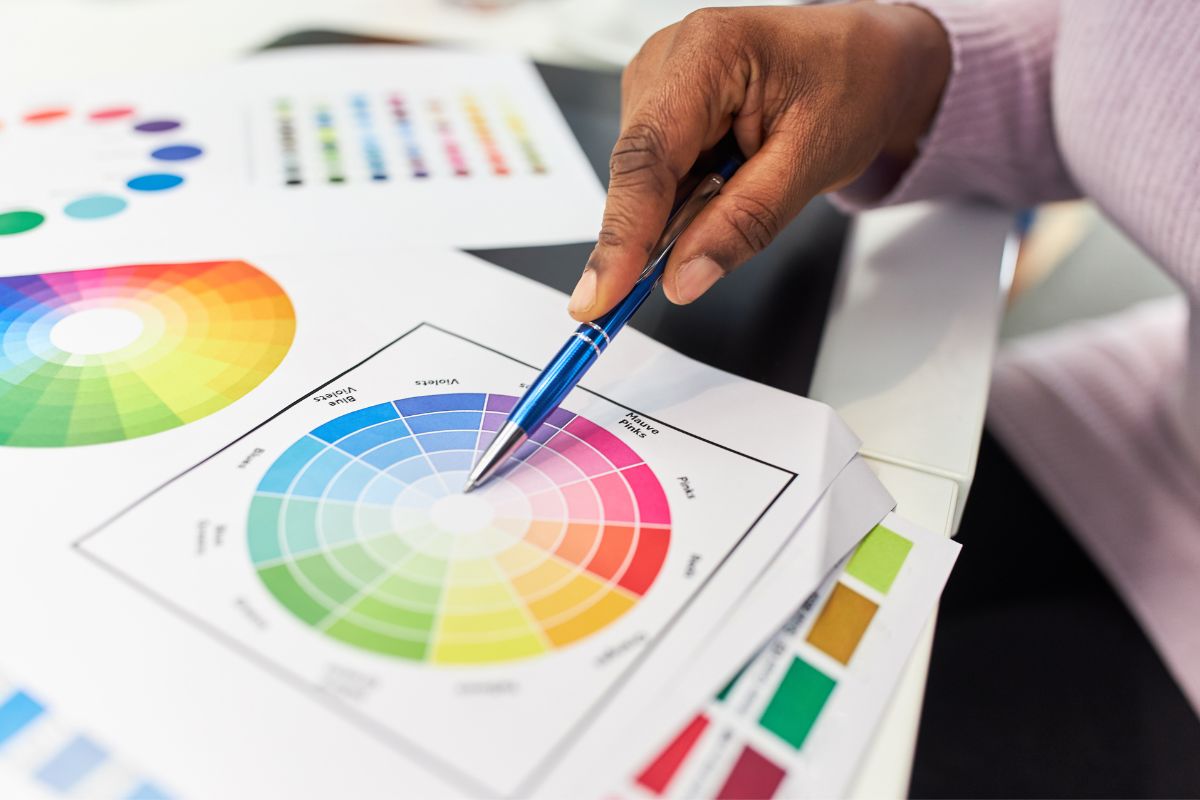
When you’re dealing with digital colors, understanding hex codes is essential. These codes are the language of colors on screens, providing a precise method to represent any color you can display.
Hexadecimal Color Representation
Hexadecimal color representation is a way of encoding color information in a format that’s easily understood by computers and humans alike. Hex codes are a six-digit combination of numbers and letters from 0 to 9 and A to F. This system is base-16, where each pair of digits represents one of the primary colors (red, green, and blue) in the RGB color model.
- Hex Format: #RRGGBB
- R: Red component (00-FF)
- G: Green component (00-FF)
- B: Blue component (00-FF)
For example, #000000 equals black, and #FFFFFF equals white. These codes do not just handle primary colors, but they also blend them to create a full spectrum.
Consisting of Red, Green, and Blue
Each color in the RGB system is made from varying intensities of red, green, and blue light. In hex codes, these are represented in two digits for each color, allowing for 256 different levels of intensity from 0 to 255—or in hexadecimal, from 00 to FF.
- Red: Begins with #FF0000 at full intensity.
- Green: Notated as #00FF00 at its brightest.
- Blue: Shown as #0000FF when fully saturated.
By adjusting each pair of hex digits, you can create over 16 million unique colors. For instance, to get a bright purple, you’d raise the red and blue values while keeping green at zero, resulting in something like #FF00FF.
Remember, decimal notation and color names are more intuitive for humans, but computers prefer the precision of hexadecimal codes when displaying colors on screen. For everyday use, color names are sufficient, but for design and development, hex is the go-to standard.
Understanding CMYK in Printing: Importance and ApplicationsCMYK in Printing
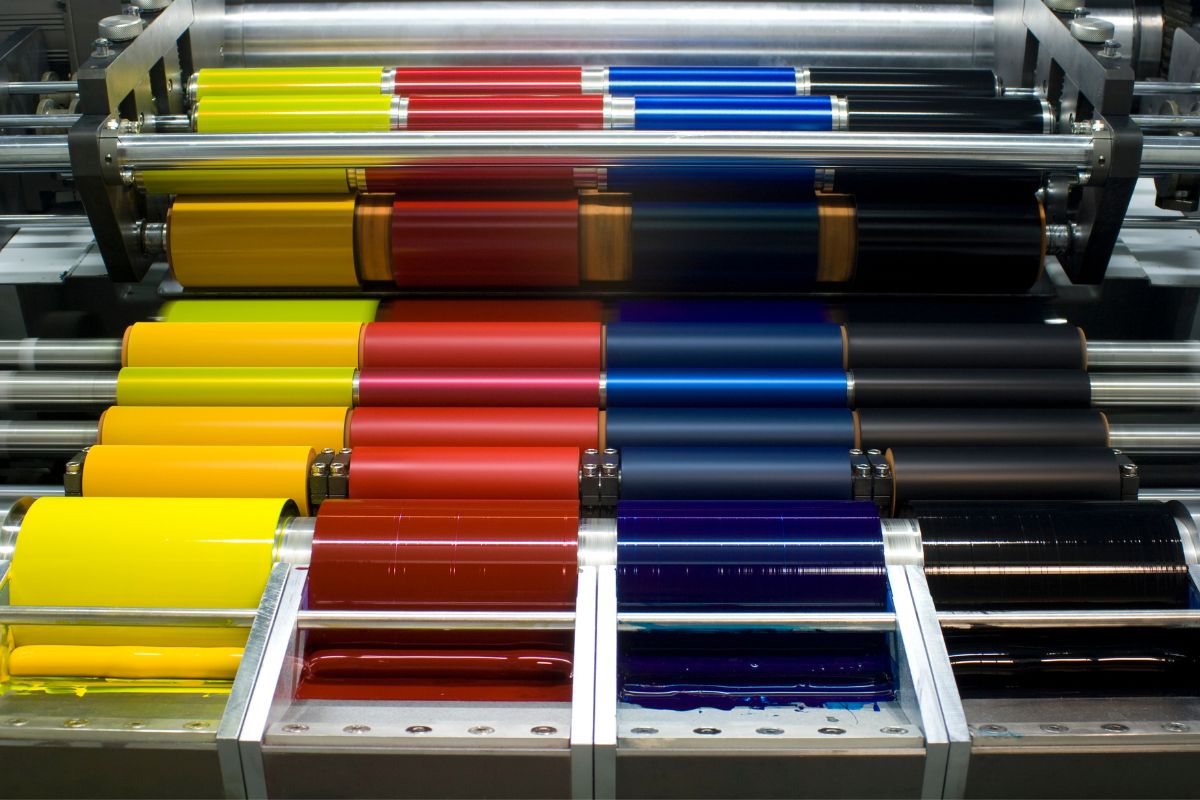
CMYK is a cornerstone of color printing, representing the four inks used in the majority of color print production: Cyan, Magenta, Yellow, and Black. This model is central to achieving a vast array of colors on printed materials.
Role of CMYK in Printing
When you interact with printed material, everything from brochures to packaging, it’s almost certainly created using CMYK color values. Printers combine varying percentages of Cyan, Magenta, Yellow, and Black inks to create thecolor spectrum you see on the final product. The role of CMYK in printing is foundational because it is the standard color model used in offset printing—and has been adapted for digital printing as well.
- Ink Plates: Each color in the CMYK model has a corresponding ink plate. As the printing process begins, inks are applied to these plates, which are then transferred to the paper.
- Color Mixing: By adjusting the amount of each ink used, printers can alter the color output. So, your design’s CMYK values are translated into physical color by controlling the ink mixture.
Subtractive Color Mixing
CMYK operates on the subtractive color mixing principle, which is different from how colors are mixed on a screen (additive color mixing). Here’s how subtractive color mixing works in printing:
| 0% Ink | 100% Ink |
| No ink results in white, as all light is reflected back. | Full ink absorption gives black or a specific solid color. |
- Cyan, Magenta, Yellow: These are the primary colors in the subtractive model. Combining these inks in various proportions can reproduce most of the visible color spectrum.
- Black: Known as the “key” plate, black ink adds depth and detail to the printed image. Without black, shadows and dark areas in a design could look muddy or washed out.
By understanding the roles and processes of CMYK in printing, you can better predict how your designs will appear once printed and make educated adjustments to your digital files for optimal results.
Conversion Process
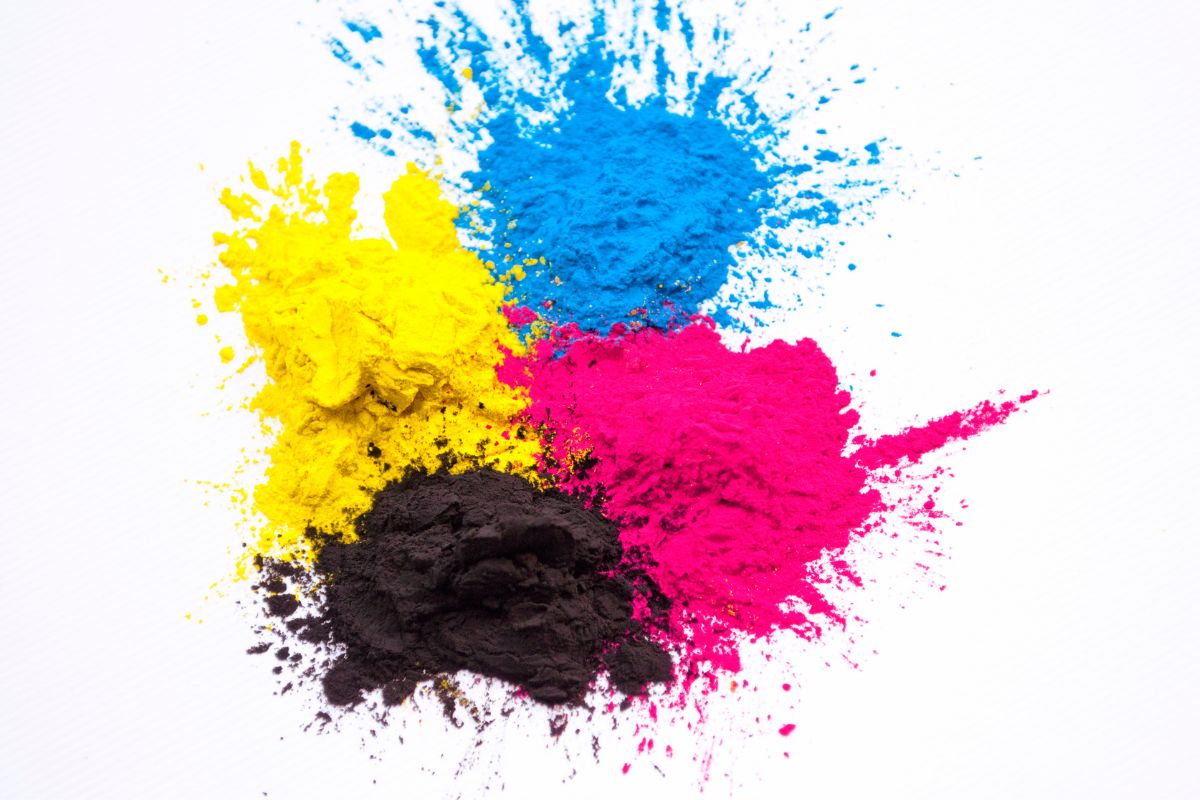
When converting hex codes to CMYK, you are transforming web-based color representations into a format used for print materials. CMYK takes into account the subtractive color mixing method used in printing.
Steps to Convert Hex to CMYK
To begin the conversion process from hex to CMYK:
- Understand the Hex Color: Hex codes represent colors in a hexadecimal format, primarily used for digital screens.
- Convert Hex to RGB: First, split your hex code into three pairs, then convert them from hexadecimal to decimal to get your RGB values.
- Translate RGB to CMYK: Use the formula to convert your RGB values into CMYK. For printing, colors are separated into Cyan (C), Magenta (M), Yellow (Y), and Key (black) (K).
Remember, this process can be intricate as it involves precise calculations to maintain color accuracy.
Using Online Tools and Applications
For a hassle-free conversion, consider using an online tool or application:
- Find a Hex to CMYK Converter: Search for a reliable color converter tool that offers hex to CMYK conversion.
- Input Your Hex Code: Insert your hex code into the tool’s input field.
- Process the Conversion: Let the tool calculate and display the CMYK values, which are ready to use for your print project.
These tools often provide additional features like hex to RGB and hex to HSL conversions for a comprehensive understanding of color spaces.
Practical Tips and Uses
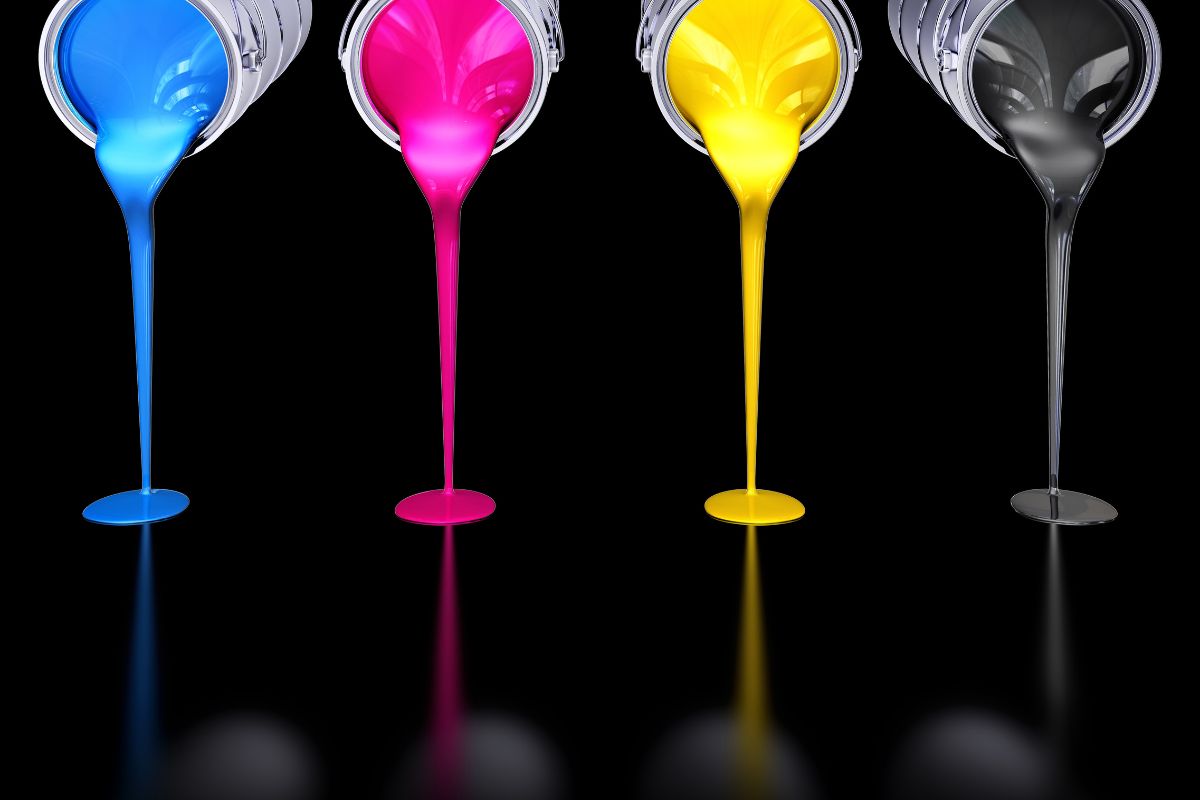
Understanding how to convert hex codes to CMYK is crucial when you’re working with digital designs that need to be printed in color with high fidelity.
Selecting Color Palettes
When you’re choosing a color palette for your project, it’s important to ensure that the colors you select in a digital format (like hex or RGB) translate accurately to the CMYK color format used for printing. This can help maintain consistent color shades across different mediums. Use tools, like the ColorBrewer 2.0, to help select color schemes that are not only aesthetically pleasing but also print-friendly.
- Hex to CMYK: Before you finalize your palette, convert your selected hex codes to their CMYK equivalents and test print them. It will save you time and resources in the long run.
- Saving Palettes: Always save your chosen palettes using both digital and print color codes. This ensures you can reproduce the exact same colors in future projects.
Creating Consistent Branding
Your branding, which includes elements like your name and logo, heavily relies on color consistency to be recognizable. Here are some tips to keep it consistent:
- Digital to Print: If you’ve designed your brand’s logo using hex or RGB, convert those colors to CMYK to ensure they look the same on your print materials.
- Document Your Color Codes: Maintain a reference document listing all your colors in their hex, RGB, and CMYK formats. This will make it easier for anyone working on your brand to use the correct colors.
By carefully selecting your color palettes and ensuring you have consistent branding, you can create a cohesive and professional look across all your materials.
Advanced Topics in Hex and CMYK
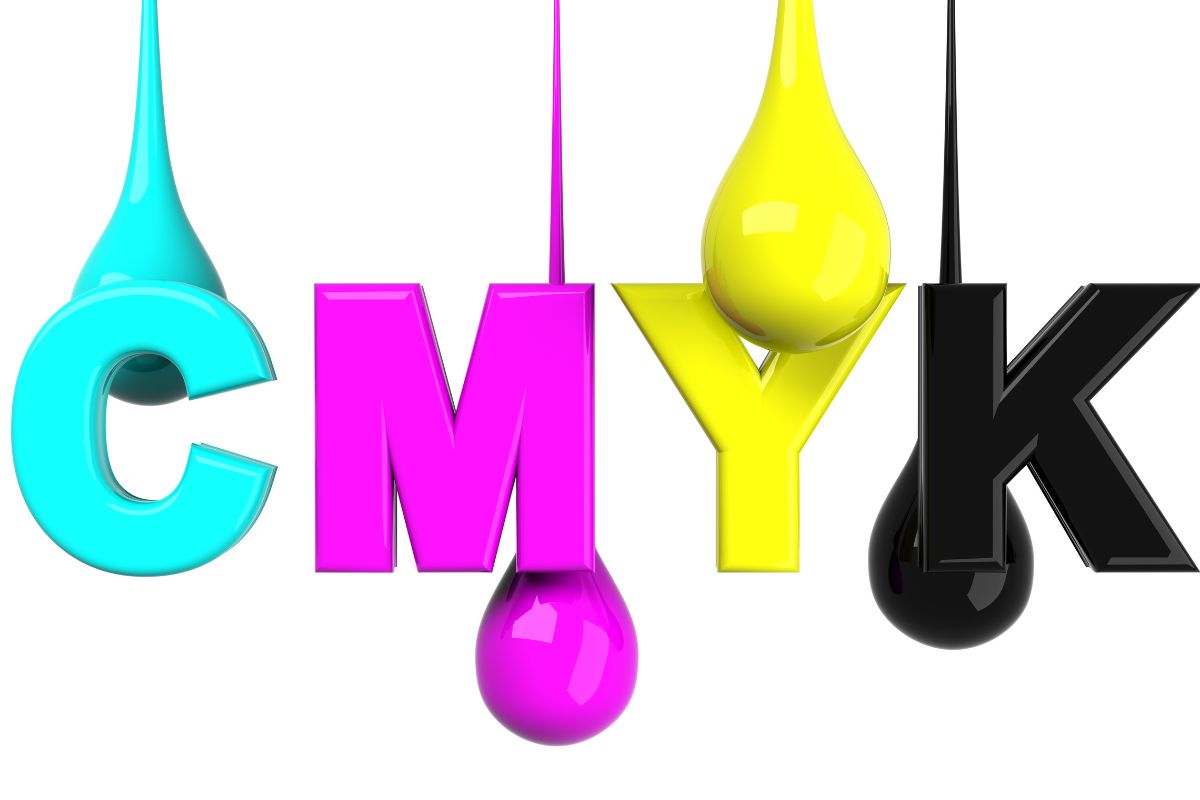
In this section, you’ll explore the intricate relationship between Hex codes and CMYK values and their application in LAB and HSV color spaces, as well as their practical use in computational applications and CSS.
Understanding LAB and HSV Color Spaces
When dealing with Hex codes, you’re working with a hexadecimal format that represents colors within the RGB color model used on screens. Conversely, CMYK values are pivotal in printing applications, describing the mixing proportion of cyan, magenta, yellow and black dyes. To bridge these two, LAB and HSV color spaces can be used. LAB color space addresses human visual perception, allowing for consistent color regardless of device. It expresses color as three values: L* for lightness, and a* and b* for the green–red and blue–yellow color components, respectively.
HSV (Hue, Saturation, Value), on the other hand, describes colors in terms of their shade (hue), vividness (saturation), and brightness (value). This is particularly useful when you aim to maintain consistency across different hues and saturations, especially when converting between color models.
Computational Applications and CSS
In the realm of computing applications, translating Hex values to CMYK is essential for tasks such as digital design and printing processes where precise color representation is required. Think of a scenario where you’ve finalized your digital design with specific Hex colors, but you need to prepare your design for printing – that’s where the conversion to CMYK comes into play.
If you’re into web development, you’ll often log in to your CSS file to style your website with accurate colors. CSS primarily uses Hex codes but understanding how to translate this into CMYK values can be essential for creating print-friendly materials based on your digital designs.
Remember, the conversion between Hex and CMYK isn’t straightforward due to the different nature of screens emitting light and inks absorbing light. Software tools and color calculators can assist in this process, ensuring that your colors match as closely as possible across different mediums.
Frequently Asked Questions
Navigating the transformation from digital to print color spaces can be confusing. The following subsections address common queries regarding the HEX to CMYK conversion.
How can you convert a HEX color to its CMYK equivalent for accurate printing?
To convert a HEX color to CMYK, you’ll need to use software or an online tool that can calculate the CMYK values that best match the HEX code. This involves translating the hexadecimal representation of a color, which is used for digital media, into the CMYK percentages suitable for printing.
What is the most reliable online tool to translate HEX to CMYK color values?
One of the most reliable online tools for converting HEX to CMYK is Adobe Color. It allows you to input your HEX code and then view its CMYK equivalent, alongside other color models.
Are there any differences between HEX and CMYK color systems that I should be aware of when converting?
Yes, the HEX color system is designed for use on screens and is based on the RGB model, which is additive — blending light to create colors. Conversely, CMYK is a subtractive model used in printing where colors are created by subtracting light via colored inks.
How does the conversion process from RGB to CMYK differ from HEX to CMYK?
When converting from RGB to CMYK, you are adapting one set of color values directly into another. Since HEX is simply a hexadecimal representation of an RGB color, converting from HEX to CMYK involves an additional step of translating the HEX values to RGB before converting them to CMYK.
Can Adobe software be used to convert HEX colors to the CMYK color space, and if so, how?
Yes, Adobe software such as Photoshop and Illustrator can be used to convert HEX colors to CMYK. Input the HEX code in the color picker, and the software will display the corresponding CMYK values, which you can use for your print designs.
Is there a way to batch convert multiple HEX codes to CMYK values for large projects?
Definitely. For projects requiring multiple conversions, Adobe Bridge or scripting in Photoshop can facilitate batch conversion. This streamlines the process and ensures consistency across all colors in the project.

